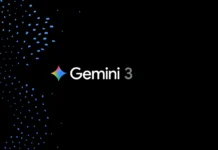The State Bank of Pakistan (SBP) on Tuesday announced in a tweet that the total deposits in the Roshan Digital Accounts (RDA) have crossed $4.5 billion after they received $57 million on Tuesday, in what was the single highest inflow of deposits in a day.
Today marks yet another historic day in #RoshanDigitalAccount, with $57mn in deposit inflows, highest ever daily figure. With this significant increase, total deposits in RDA have crossed $4.5bn. We are humbled by the continuous trust and commitment of our #OverseasPakistanis. pic.twitter.com/TRQpN0Hvn5
— SBP (@StateBank_Pak) June 21, 2022
The statement, however, has caused some confusion and misled people to believe that there are currently deposits worth $4.5 billion lying in RDA accounts – which is a special banking facility available to non-resident Pakistanis so they can have banking access in Pakistan.
As per an explanation provided by an official at the SBP aware with the intracies of RDAs, the value of $4.5 billion being given by the SBP is simply the amount of inflows that RDA accounts have received since their inception, and do not reflect the amount that has been withdrawn during this time as well.
It is a simple concept – just like money can be deposited in the account it can also be withdrawn, and the overall inflows do not reflect the total balance without knowing how much has been withdrawn.
To make matters worse, the $57 million deposits recorded in one-day may also have reached that mark only because of the way that the SBP counts deposits and withdrawals, and without data about the inflows and outflows the amount in de facto amount cannot be determined.
Are total inflow deposits not equal to deposits?
For simplicity, let us break this down into an example. If there are inflows worth $100 million in January, $200 million in February, and $150 million in March the total amount of money deposited in these months totals to $450 million. However in the same months, money will also have been withdrawn from the accounts. So if the withdrawals, or outflows, were $50 million in January, $25 million in February, and $100 million in March, then there will have been withdrawals worth $175 million. At the end of these three months, the accounts would have $275 million left.
The SBP’s current congratulatory tweet is only telling us how much money has come in and not what has gone out. The SBP is not stating the balance, they’re merely stating the total inflows till date. The graph shared by the SBP is a cumulative bar chart where the inflows are added to the existing sum of inflows.
This is also a very simple concept. If inflows worth $100 million were submitted in April, and then worth $75 million in May, the SBP’s graph will only show that total deposits grew over these two months. It will not show that fewer deposits were made in May compared to April – hypothetically speaking.
Based on information provided by officials at the SBP, it is important to note that when an individual makes a deposit in his or her RDA, the deposit does not show in the country’s reserves, instead it is a part of the balances held by commercial banks. The Naya Pakistan Certificates (NPC), however, are a component of the nation’s FX reserves. When an individual buys a NPC, the bank gives the SBP dollars to buy the certificate.
Are the ‘record’ inflows a technicality?
It is also interesting how the SBP recorded the highest ever inflow till date of $57 million amidst uncertain economic circumstances. Here again SBP is talking about the inflows only, and not the net flow, which might even be negative, as it could be possible that outflows are greater than inflows.
Even if one looks at only the inflows, it is important to see the source of that inflow because of the way SBP counts inflows. For example, when an individual chooses to withdraw their NPC at maturity or even before, that amount is automatically deposited into their RDA.
The central bank also counts this as an inflow into RDA. It is very likely that this amount might be repatriated in the next day or two, however, technically this is considered an inflow into RDA. This means NPC withdrawals on Tuesday were also included in the $57 million record single day deposit.
There is no available data on breakdown of the inflows therefore it is difficult to ascertain how much can be attributed to NPC withdrawals. But since the withdrawals from that day are also counted in this ‘record’ $57 million deposit, posting graphs of this sort is merely gimmickry. The SBP also does not disclose data of withdrawals from RDAs, other than the ones done to buy NPCs or to invest in PSX.
The annualized return on a 5 year NPC is 7% for USD and 11% for PKR, which despite an increase in interest rates in the US, is still higher than the return in most countries, thus it could also be possible that investors choose to reinvest in NPC upon maturity, or first time NPC buyers choose to invest.
However, sources at commercial banks working on RDA product development explain that the SBP is pushing banks to engage customers more than ever and are encouraging banks to dedicate more resources on marketing of RDA.
In the past, former governor Dr. Reza Baqir in response to a question by Profit explained that advertising was an important factor influencing RDA account openings and inflows. He said, “When TV ads and overseas means to advertise are used, more accounts are opened, when stopped the pace slows down.”
Is the SBP trying to calm sentiments?
In the past, upon the dismissal of the Imran Khan led PTI administration, the SBP came out and refuted news about large withdrawals from Roshan Digital Accounts (RDA) following Imran Khan being voted out of the National Assembly.
“The SBP rebuts fake news on social media about large withdrawals from Roshan Digital Account (RDA) and slowdown in inflows. So far in April, inflows are very strong at around $86 million and there are no abnormal outflows. Total inflows have now surpassed $4 billion,” it tweeted on the 11th of April this year.
With news of the interbank facing a FX liquidity crunch, the SBP is responding to panic sentiments. On the same day as the tweet about RDA inflows (June 21, 2022), the SBP also tweeted about rumors regarding reserves, a curtailment of import payments, and banks running out of dollars.
1/3 #SBP has noticed certain rumors implying that SBP Reserves have dried up or are not usable, that SBP has stopped import payments, and that banks have run out of US$.
— SBP (@StateBank_Pak) June 21, 2022
























Excellent research and an excellent article. Kudos.
Shameful, Just shameful, even the state bank of this country cannot be trusted.
Good job exposing this.
Nice article about RDA
Thanks for this wonderful article about RDA
The author is also speculating without having an authentic source of information. Such write ups serve no purpose other than creating confusion in the minds of the readers.